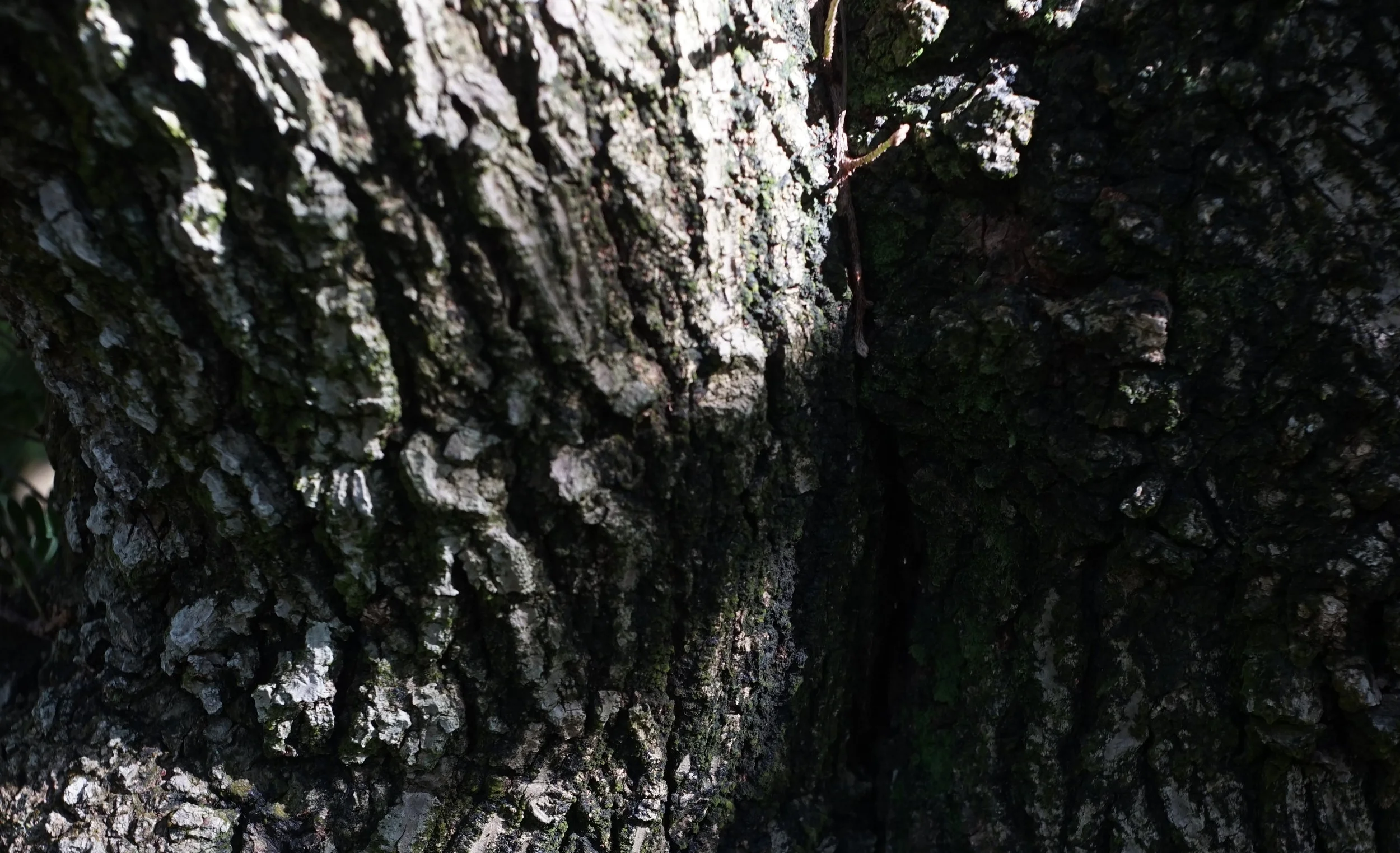Growing Philosophy
“Growing organically is about getting back to the basics and making due with what you have. In a sense, you could call it one of the most quintessentially American things to do, practicing daily self-reliance in the service of the inescapable crux of human existence: food, water, shelter, and loving community.”
If we can rake aside the leaves and mulch from our tree rows or dig a small way down and see the life exemplified in the images above, we know we are growing in a living soil. If we can dig a small way farther and see the life of tender feeder roots fanning out into uncharted reaches of the soil, we know we are doing better still:
Weed Management
Weed management is achieved strictly through line-trimming, deep-mulching, and horizontal training of our trees, whereby the soil is shaded too strongly to grow aggressive weeds. Our soil is never cultivated to any depth. It is not uncommon to see a blanket of recumbent broad-leaf weeds and grasses dotting the decomposing mulch beneath our trees.
Native Fertility
In an effort to retain critical soil moisture, enhance microbial activity, build humus, and retard the oxidization of soil minerals, the farm engages in a program of continual mulching throughout the year. All would-be tree waste is chipped and distributed beneath the trees from whence it came, and untreated chips from local timber processing are used to supplement on-site sources. All leaf litter is retained in our tree rows and redistributed as-needed. These are the principal sources of fertility on the farm.
Even avocados that have ceased being productive will ultimately increase the productivity of other trees at the farm. There is great poetry in this, every bit the equal of the physical beauty of their 40-year-old, gnarled trunks.
Imported Fertility
To help maintain the consistent and high yields that are demanded of a commercial organic operation on this fifteen-acre scale, native sources of fertility are supplemented regularly with OMRI-listed hydrolized fish emulsion, kelp meal, and custom-blended pelletized amalgams of balanced fertilizer, in strict observation of USDA National Organic Program standards.
Pest Management
Pests both seen and unseen are treated preventatively by attending to the health of the soil biome first and spraying (or drenching) second. Trees are intercropped on basic divisions of one or two acres to discourage the spread of non-beneficial organisms and disease. The fruits that we grow experience relatively low levels of pest and disease pressure by their nature and therefore seldom need spraying. When we do spray, we do so ahead of predictable cycles of pest pressure so that a real issue never develops. To learn more about how we manage our trees through spraying, please visit the Spray & Fertilization Schedule page.







